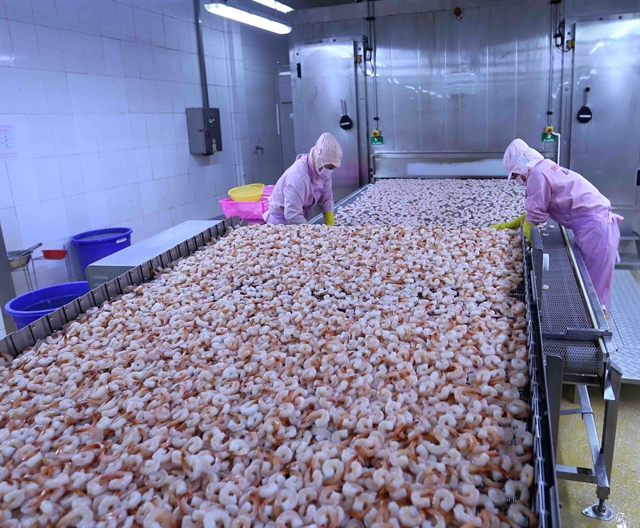 Economy
Economy


|
| Shrimp processing for export. Việt Nam's exports expanded by 8 per cent in the first two months. — VNA/VNS Photo |
HÀ NỘI — While Việt Nam remained significantly exposed to the COVID-19 outbreak and ongoing turbulence in global financial markets, its economy remained resilient to external shocks in the first few months of 2020, according to the World Bank (WB).
In its East Asia and Pacific Economic Update April 2020 released on Tuesday, the WB said on the upside, Việt Nam was strongly positioned to benefit from numerous free trade agreements that were due to come into force.
In the first two months, its exports expanded by 8 per cent, FDI inflows amounted to US$2.5 billion and retail sales were up by 5.4 per cent, the bank said, noting that while prospects remained favourable for the Vietnamese economy in the medium term, GDP growth would be affected negatively by the recent novel coronavirus outbreak, now a global pandemic.
The WB cited preliminary estimates as suggesting that the rate of economic expansion could decline to about 4.9 per cent in 2020.
The most main impacts felt would be in the tourism and manufacturing sectors due to supply chain disruptions. Inflationary pressures were also projected to increase temporarily.
With many households now wage dependent even in rural areas, a slowdown in tourism, hotels and catering, as well as manufacturing, could temporarily increase poverty during the first half of 2020, the WB predicted.
According to the report, the fiscal deficit would increase in 2020 due to lower revenue, but a fiscal stimulus could partially compensate.
Over the medium term, growth was projected to rebound to 7.5 per cent in 2021 and converge at around 6.5 per cent in 2022, reflecting improved external demand and a firming of the services sector, as well as a gradual recovery in agricultural production, the WB added.
Based on lessons learned from international experience and existing dialogue with authorities, the WB recommended a three-step strategy. These were to focus on supporting the most affected sectors through the combination of targeted tax and financial measures as well as assistance to the most vulnerable firms and employees; accelerated implementation of the public investment programme and taking opportunities from the current crisis by encouraging priority reforms in the development of a digital economy; and the further integration of the Vietnamese economy in global value chains.
It also suggested Việt Nam manage external risks by diversifying its trade flows, improving its competitiveness and adhering to new trade agreements. — VNS




